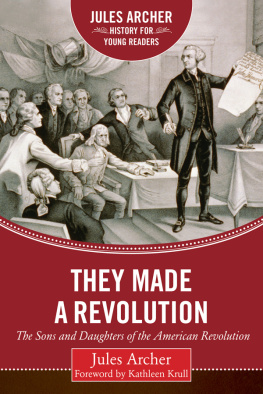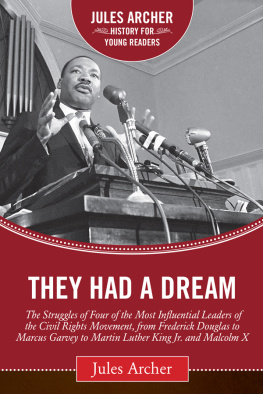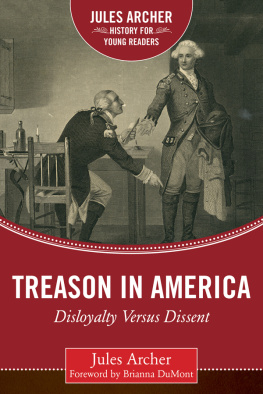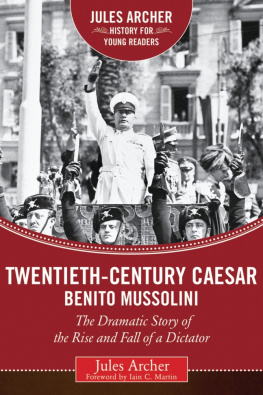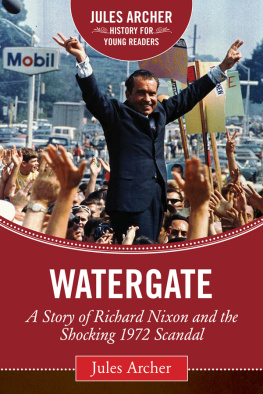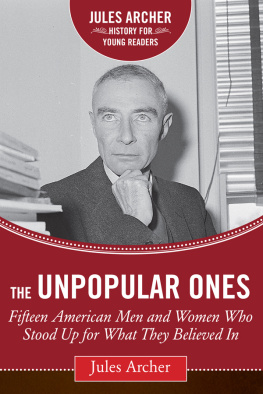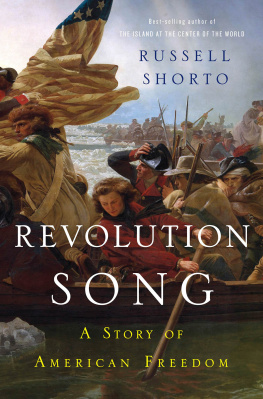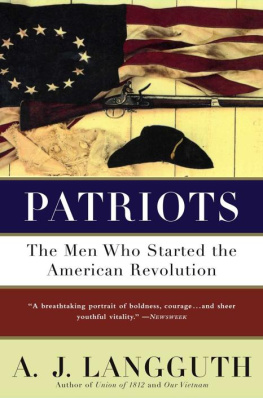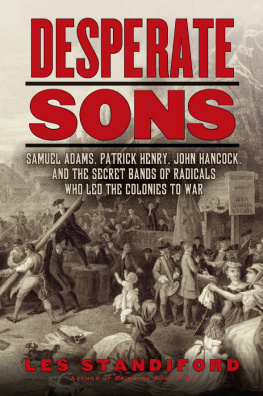THEY MADE A REVOLUTION
The Sons and Daughters of the American Revolution
Sure to be one of many comparable retrospectives and one of the more appealing.
Kirkus Reviews
Historical texts often reflect the time period in which they were written, and new information is constantly being discovered. This book was originally published in 1973, and much has changed since then. While every effort has been made to bring this book up to date, it is important to consult multiple sources when doing research.
Copyright 1973 by Jules Archer
Foreword 2016 by Sky Pony Press, an imprint of Skyhorse Publishing, Inc.
First Sky Pony Press edition, 2016
All rights reserved. No part of this book may be reproduced in any manner without the express written consent of the publisher, except in the case of brief excerpts in critical reviews or articles. All inquiries should be addressed to Sky Pony Press, 307 West 36th Street, 11th Floor, New York, NY 10018.
Sky Pony Press books may be purchased in bulk at special discounts for sales promotion, corporate gifts, fund-raising, or educational purposes. Special editions can also be created to specifications. For details, contact the Special Sales Department, Sky Pony Press, 307 West 36th Street, 11th Floor, New York, NY 10018 or .
Sky Pony is a registered trademark of Skyhorse Publishing, Inc., a Delaware corporation.
Visit our website at www.skyponypress.com.
10 9 8 7 6 5 4 3 2 1
Library of Congress Cataloging-in-Publication Data is available on file.
Print ISBN: 978-1-63450-195-8
Ebook ISBN: 978-1-63450-626-7
Series design by Brian Peterson
Cover photo credit Library of Congress
Printed in the United States of America
CONTENTS
FOREWORD
This clever collective biography was first published under a slightly different title as a Scholastic paperback in 1973probably timed as a lead-in to the gala 200th anniversary of Americas birth. That was Jules Archers claim to fame: if you needed a book for young readers about historysay, the resistance movement of 1776he was the man.
Archer pulls us into the year 1776 with portraits of ten of the principal actors of the American Revolution. He focuses on personalities, warts and all, allowing us to get to know these heroes as human beings. He freely uses their letters and diaries to reveal their everyday struggles, as they gradually become aware of how they are influencing history.
These arent complete life stories, however. Instead, in an ingenious structure, he shows how each persons life led to one very specific, thrilling moment: June 7, 1776. On that fateful day, forward-thinking Richard Henry Lee of Virginia stood up and declared to his fellow Congressmen that the thirteen colonies being governed by England should be free and independent states.
An illegal bombshell of a proposal, and one that could have gotten him and his listeners hanged for treason. Indeed, Archer injects suspense right from the second page. To England, these men were traitors of the first order, and this was a battle cry. And if it did come to war? The outcome was unpredictable and could have been catastrophic, death, and destruction for all. If anything, the chances of winning against the most powerful nation on earth were slim to none.
Imagine the tension, imagine the courage of these first American patriots.
Archer uses catchy chapter titles to highlight each one. The Cranky Yankeethats John Adams all over. He was obnoxious, unpopular (and he knew it), but the one who seconded Lees motion and was absolutely indispensable to the new nation. In The Sly Fox, we can read about cagey Sam Adams in action, rabble-rousing Bostonians into revolt. The Rich Rebel brings John Hancock to life, serving the finest wines, dashing about town in coats embroidered with gold, risking his fortune to support Sam Adams, utterly devoted to the cause.
Theres the The Thunder Masterthe always-mesmerizing Benjamin Franklin. The Silent Redhead gives us a new way of looking at Thomas Jeffersonbesides examining his hair, we see him as the second-youngest man in Congress, one who hardly ever spoke unless he truly had something to say. The Disgusted General makes us feel both sorrow and admiration for George Washington. He started from the bottom as a teenage surveyor crawling in the mud, was already a major in the Virginia militia by nineteen, and rose to the very top, never saying no when asked to serve his country.
The Silver-Tongued Bumpkin is Patrick Henryan odd duck with an odd accent. But by all accounts he was the most spellbinding speaker ever, electrifying listeners with his give me liberty or give me death! Thomas Paine is The Man of Common Sense, a recent immigrant who changed thousands of minds, including George Washingtons, with his pamphlet, Common Sense , calling for independence.
As for the daughters of the American Revolution, Archer strikes a contemporary note by going out of his way to mention women. He includes two separate chapters on the very brave Abigail Adams and full-of-secrets Martha Washington, giving each woman her due as an activist, motivator, advisor, and patriot. Another chapter talks up the fighter known as Mollie Pitcher; Deborah Samson, who served three years as a soldier; and several others. Archer makes clear that women were vital to the resistance movement.
He adds another modern tone in discussing what each of his heroes thought about slaveryhow most considered it morally wrong, with even the ones who had slaves experiencing seriously conflicted feelings. The banning of slavery was actually in the Declaration of Independence at first, then got dropped, with many mourning the injustice to black Americans and predicting what it would take to get rid of the evil institution.
Following his portraits of the patriots, Archer has chapters on the twenty-seven days of tortured debate that followed Lees proposal, the birth of the Declaration of Independence and a little about the fifty-six men who signed it, and a wrapping-up of what happened to everyone afterward.
As for quibbles: in his efforts to humanize these figures we know mostly as marble statues, Archer leans on clichs of physical description and the occasional dated phrase. In general, hes a little too dismissive of Martha Washington, downplaying her smartsshe was well-read. Based on my own research (for A Kids Guide to the First Ladies , HarperCollins, 2017), he makes too much of Georges first love, Sally Fairfax, and the pall she supposedly cast over his marriage. Theres plenty of evidence that George and Martha couldnt have been more devoted to each other. Likewise, there is proof that Paul Revere did not make Washingtons dentures, as Archer says. The story that Archer tells may go deeper than history, but he gives us accessible stories and characters, breathing life into history. Were Archer writing this today, hed have included back matterbibliography, an index, and especially sources for quotes.
But he does succeed in synthesizing great gobs of history into a succinct account of this world-changing drama. As Kirkus Reviews pointed out at the time, this book was sure to be one of many comparable retrospectives and one of the more appealing. Jules Archer has given us a compelling, compact volume about the personalities who shaped our countryone well worth discussing in classrooms today.
Kathleen Krull
ONE
Who Were They?
The Founding Fathers and Mothers of our country were not, as history texts often make them seem, stuffy cardboard figures of unbelievable virtue and nobility. They were, of course, emotional, flesh-and-blood people with no lack of human weaknesses. But they were caught up in the excitement of turbulent times that led many of them to risk their necks in a desperate determination to resist tyranny.
Next page
